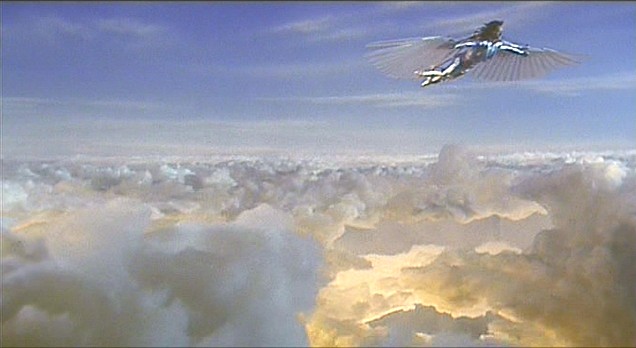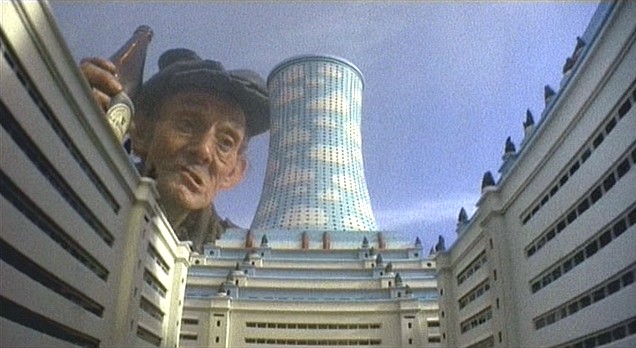
DEPARTMENT OF INFORMATION - PAPERWORK - NO. 27B-6 - SUBJECT: FILM REVIEW - EDWARD HOSKEN - 20118472

Directed by Terry Gilliam, Brazil (1985) is a commentary on Modernism from a rich, sceptical and sarcastic Post Modern perspective highlighting the effects of technology and architecture on people. It is a place where information is of the most importance and that the individual is as insignificant as a piece of paper. It also represents two worlds, fantasy and reality.
The harsh reality that is Brazil highlights the traits of both Modernist and Post Modernist architecture movements. Here particular traits that can be observed in this ‘experimental’ film is an enhancement of the idea of ‘form follows function’. Unfortunately the film illustrates that after Modernism, Post Modernism has fallen to its feet. The use of ducts, plumbing and piping that interrupt many spaces feature throughout the buildings showing the reality of the built environment. This is evident in the lead character, Sam’s apartment where the chaos continues to propagate and fail and also at the restaurant he dines at with his ‘young’ mother where the pipes seem to feature in the centre as if it were replacing a fountain..
Has Post Modernism gone too far? What used to be huge modernised machines is an now an unrealistic, stagnant, decorated, inefficient and ineffective fault. This is arguably like many Post Modernist buildings of today such as Phillip Johnson’s AT&T Building in New York with its gigantic reminiscent pediment that has no function. This highlights that the old is clashing with the future that is within the world of Brazil. Or perhaps the two layers of engineering and architecture where one masks the other. The only sense of hope is Sam’s world are his fantasies.
Second to the built environment is that of fantasies and dreams that are fluctuated throughout the film and sheds the only ray of sunlight and escape from the repression of the architecture. Here Sam’s dream world is high up in the clouds where it combats the harsh, almost Londesque metropolis with ‘hopes, wishes, and dreams’ where he is the hero saving the princess. In contrary you could question if there is any reality in the film at all which could be clearly illustrated in a later scene where the billboards hide the landscape from the motorway. Unfortunately for Sam, the architecture of the film slowly infiltrates and impedes upon his dream and brings a functional and harsh world in theory, but a dysfunctional and confusing one in practice.
This is a fantastic film that contains many levels and is visually dense requiring multiple viewings to achieve a ‘real’ understanding of what perhaps lies ahead, or what is Brazil.
